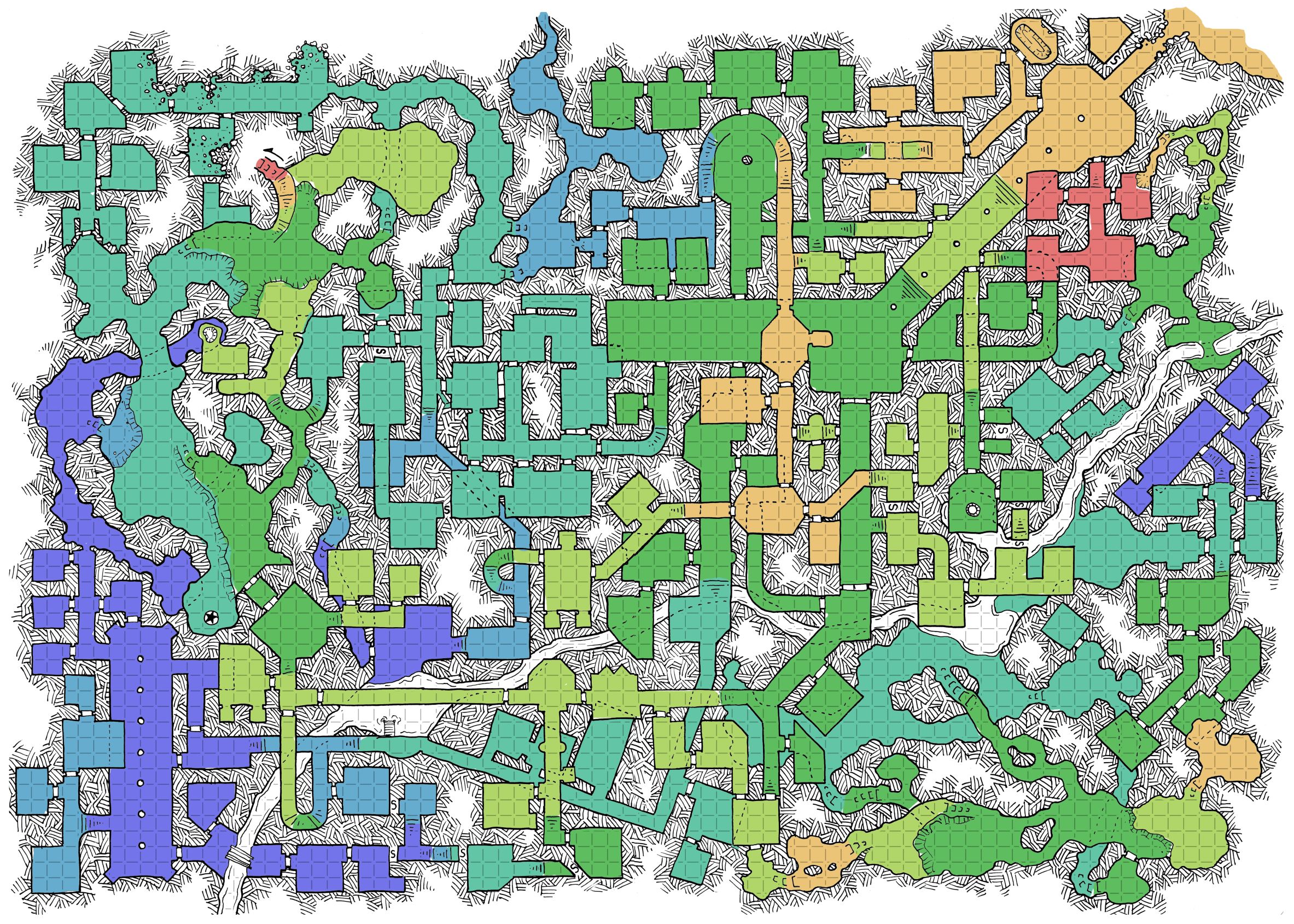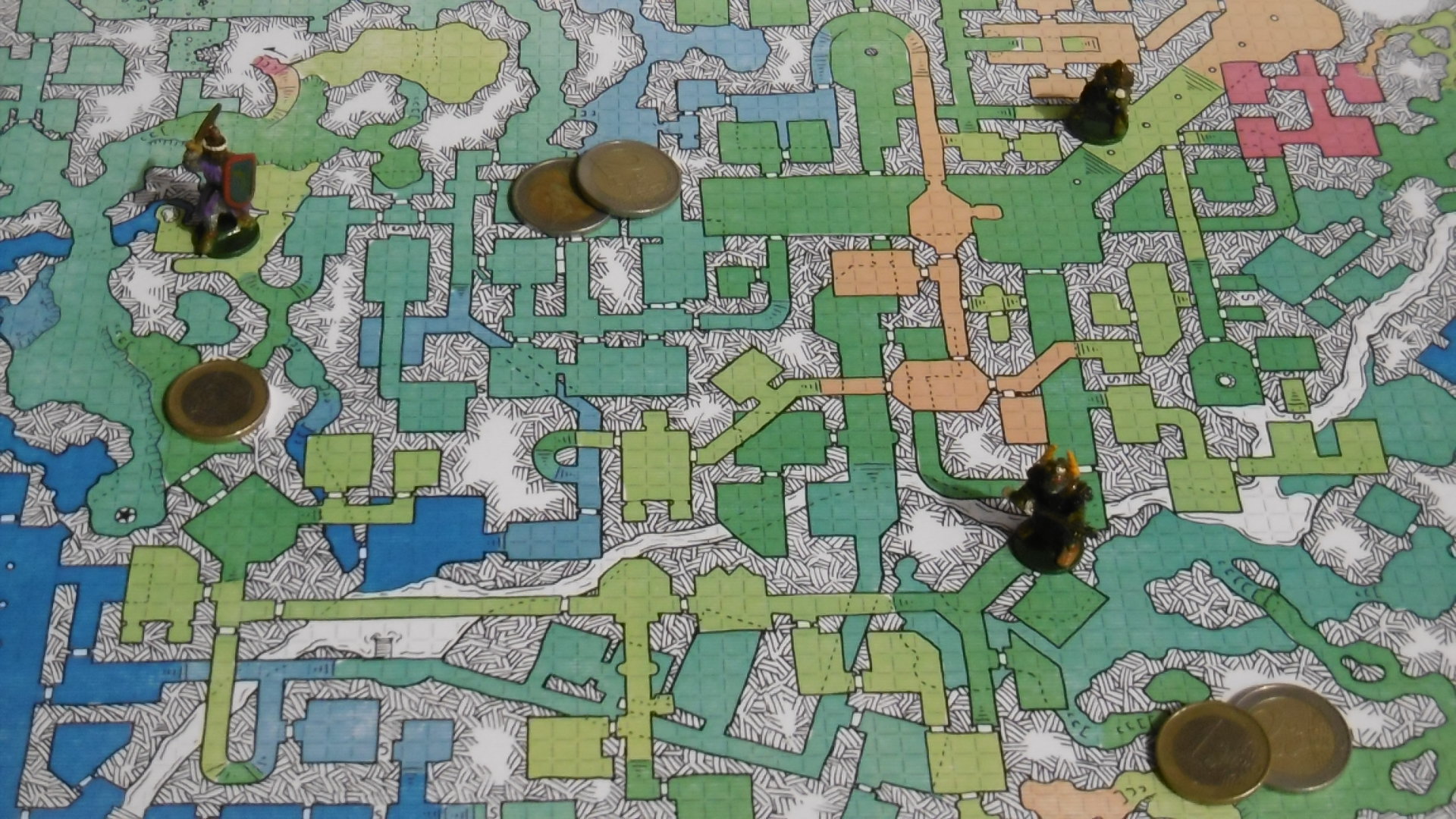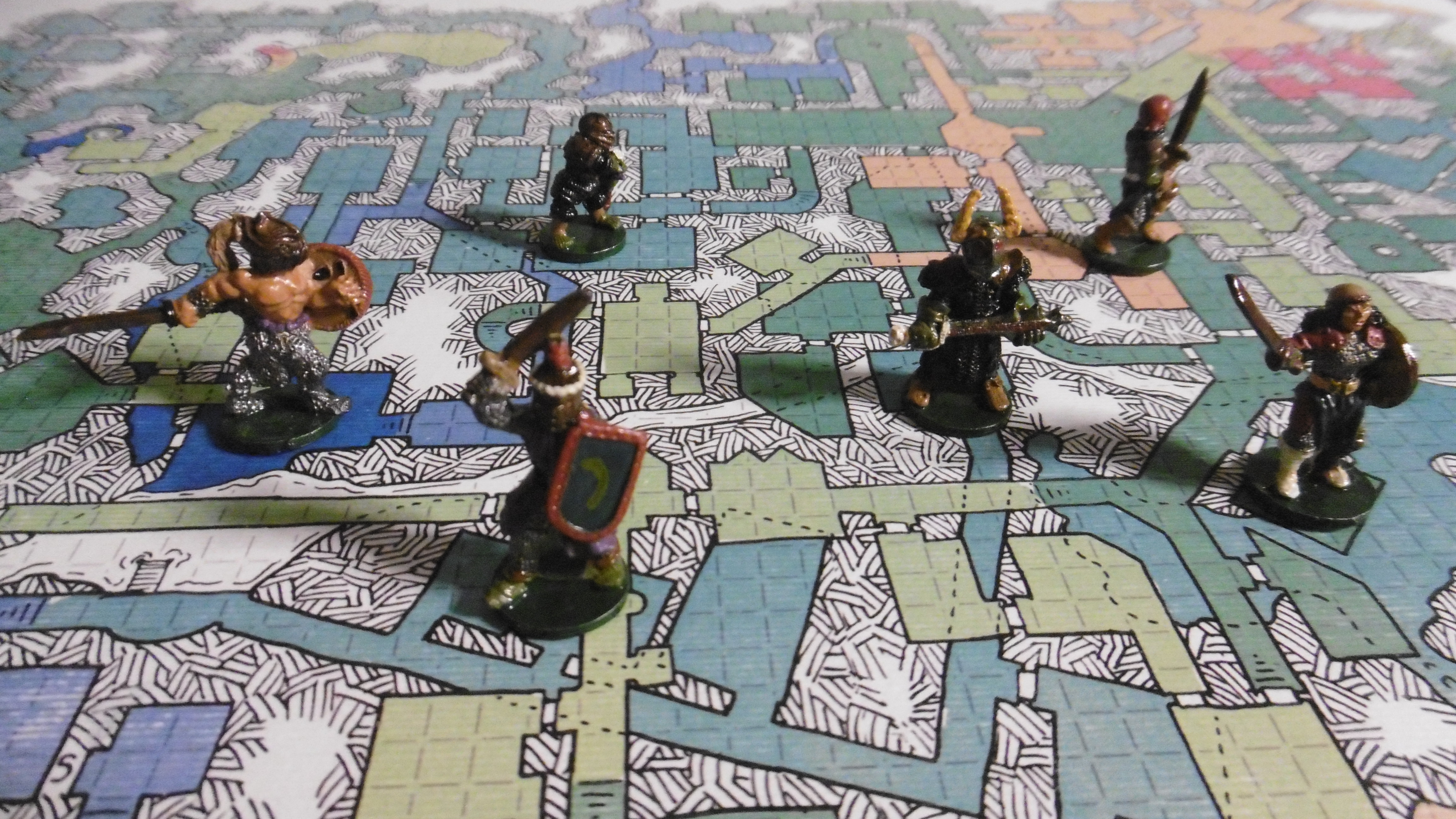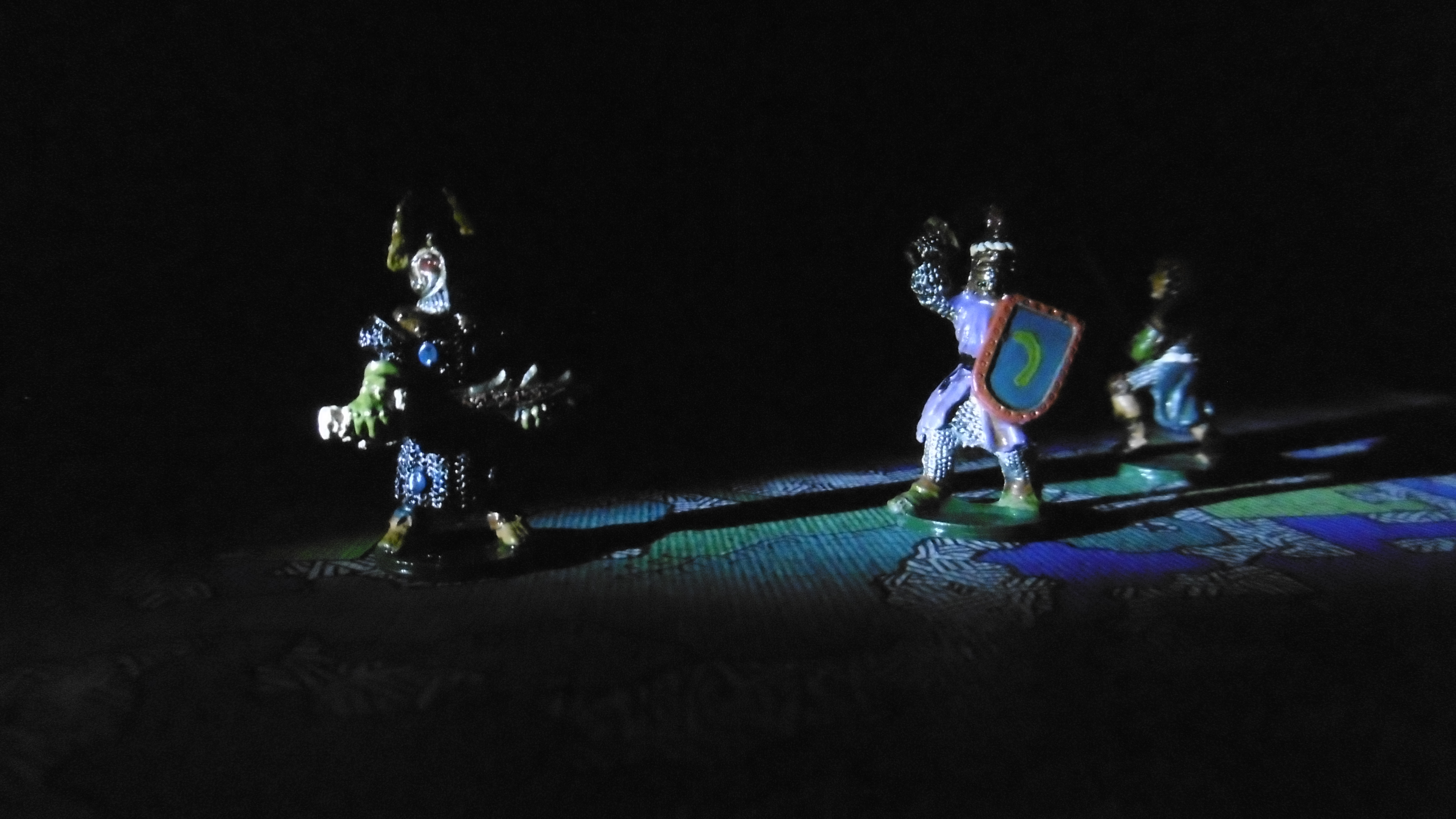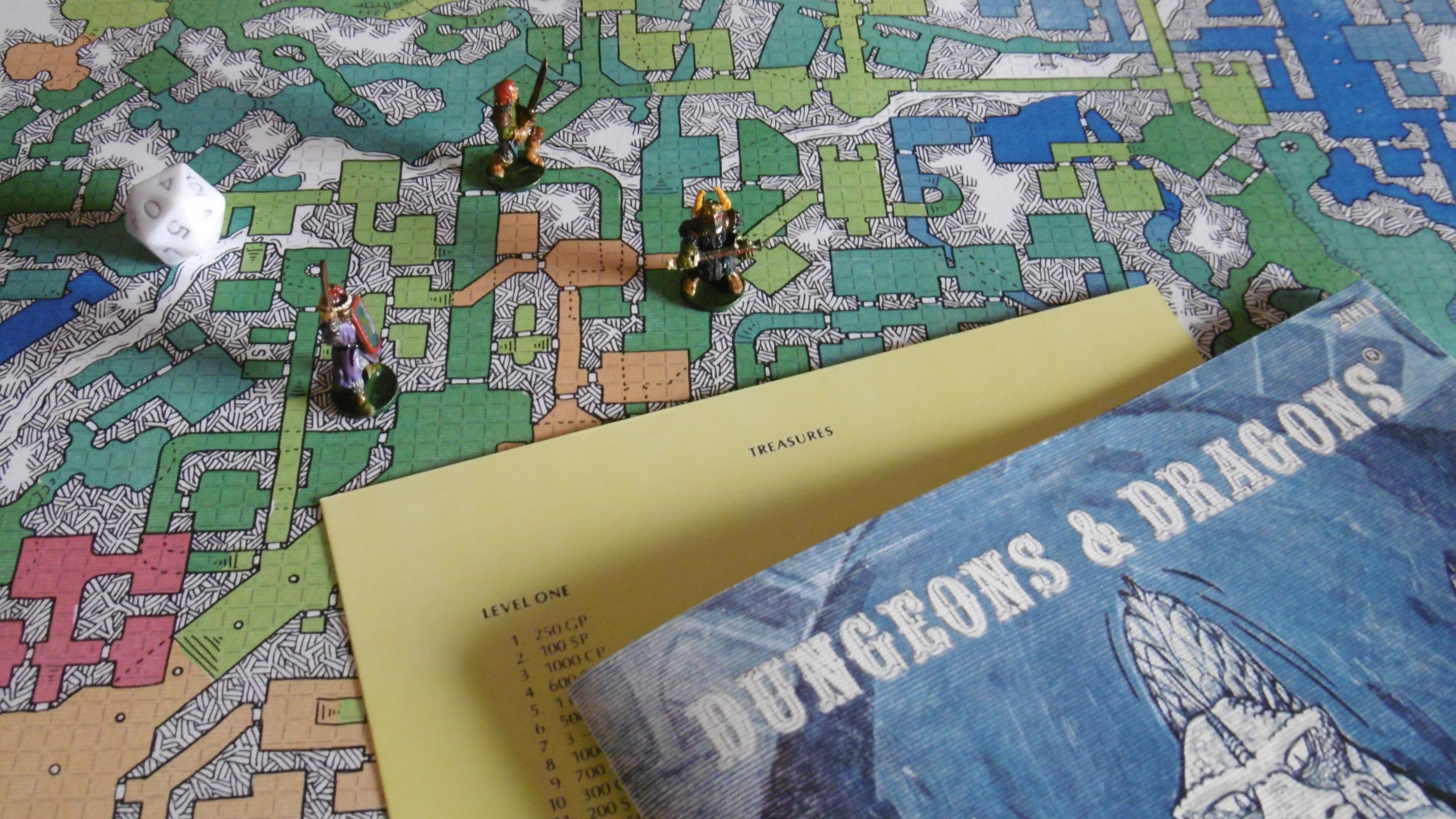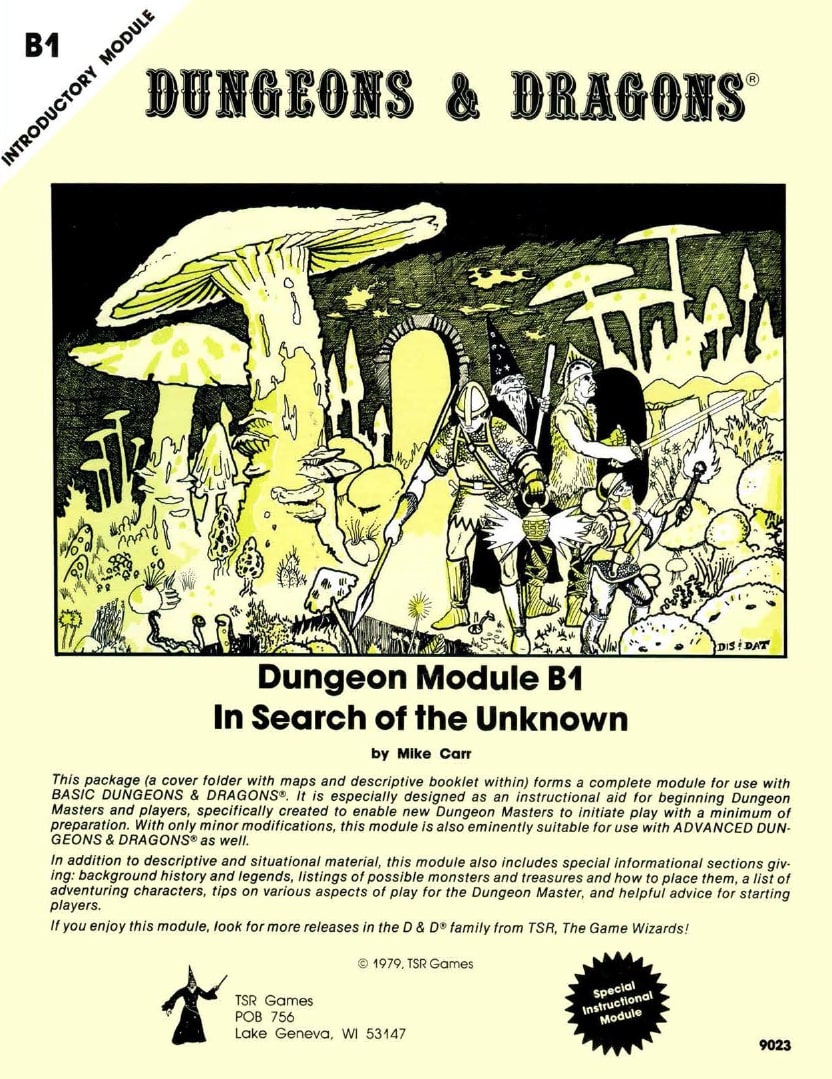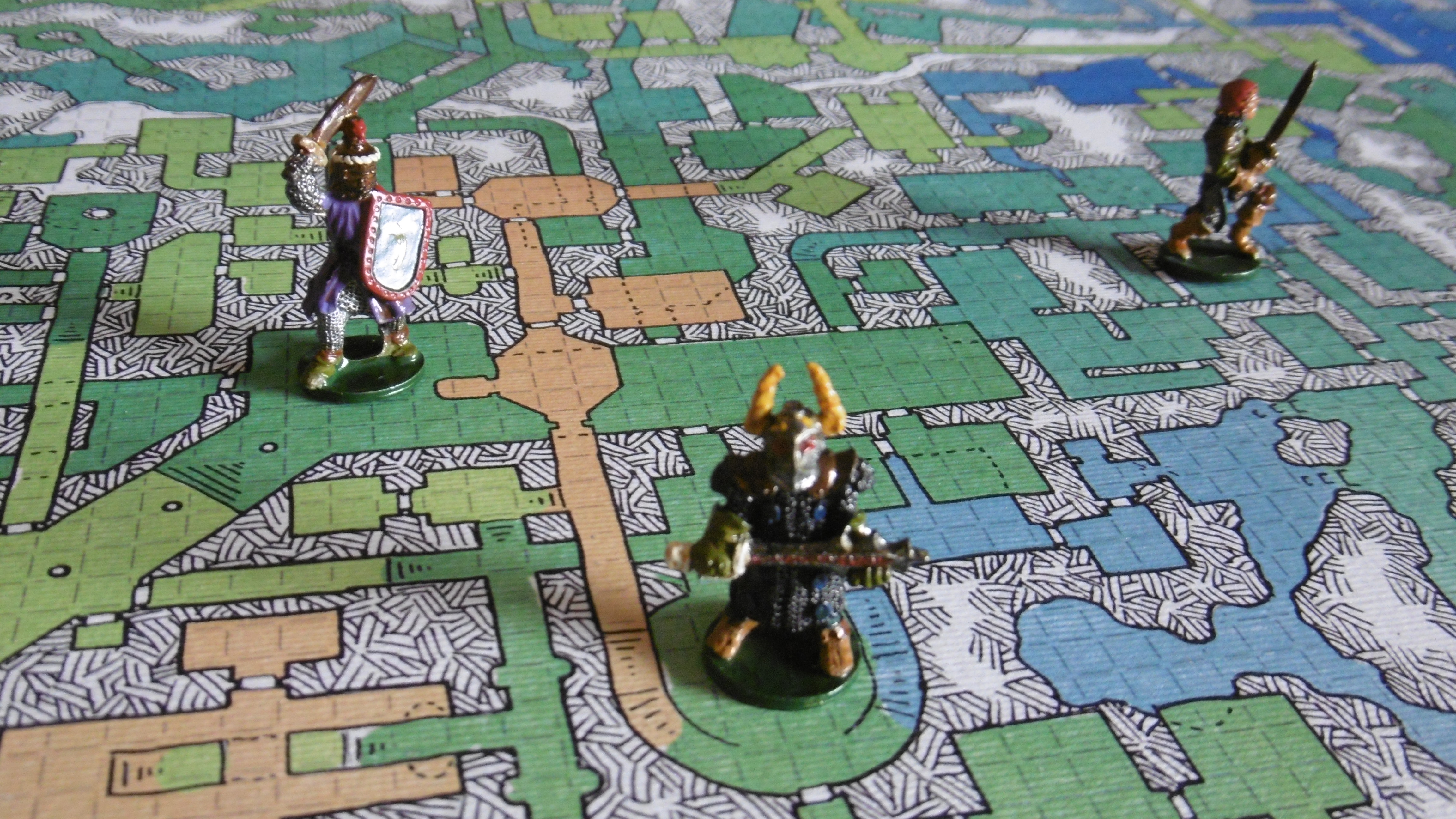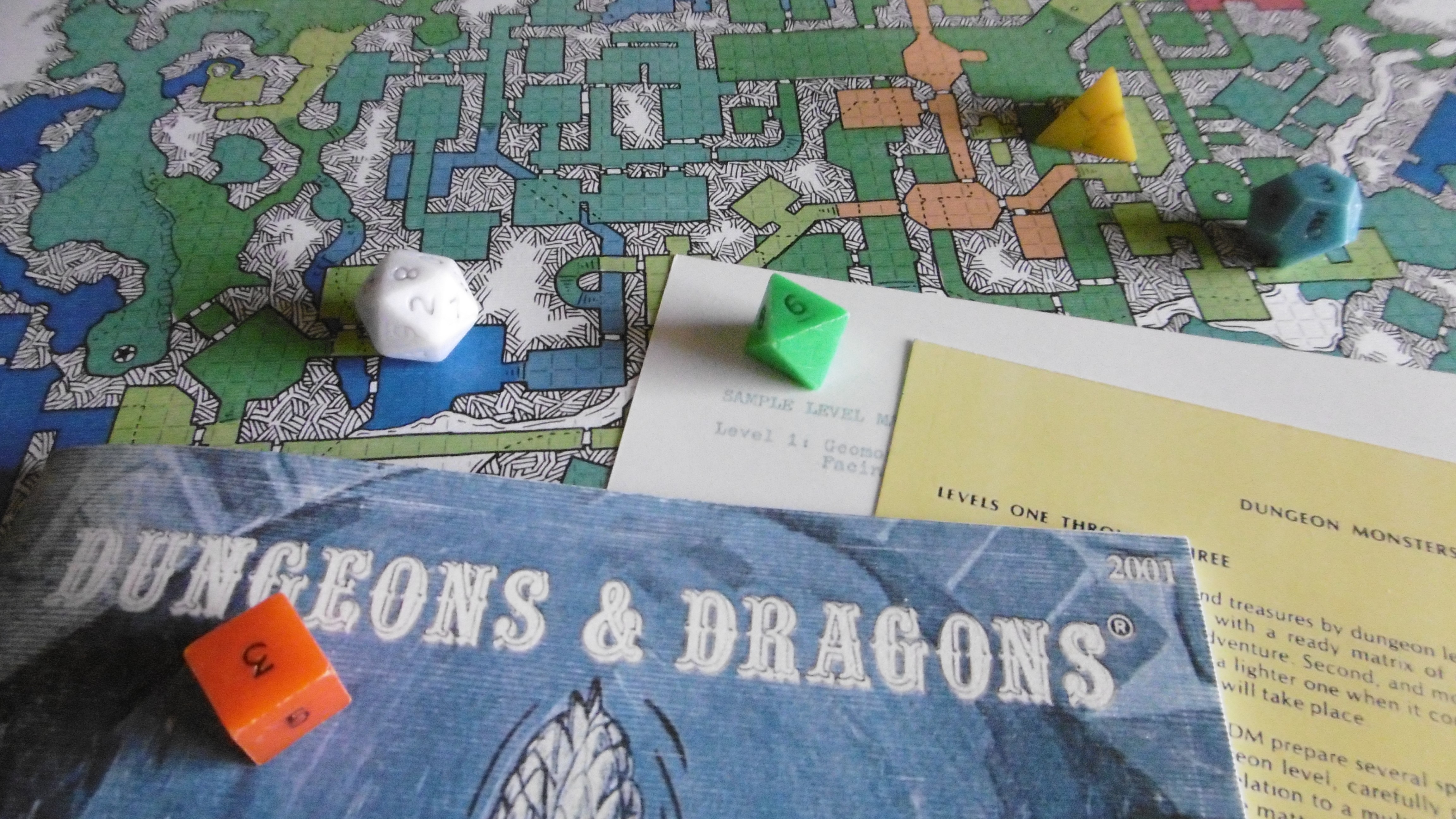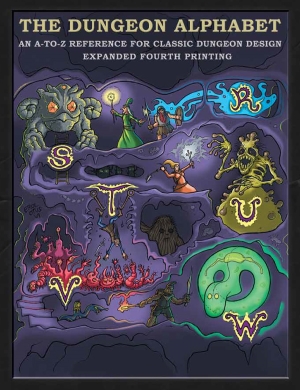Dungeon Levels and Treasures
In our explorations we compressed The Halls’ seven levels to three, tugged them back out to four, and stretched the first level across colors like the Painted Desert. Then we chocked the rooms full of treasure and adjusted them for party size. All the while, we assumed beginning character levels, and we have yet to consider scale.
Here, I rectify the matter of scale and summarize the dungeon levels by color as well as the treasure sequences. With these, and variations as inspiration hits, we may create unique configurations of these Deep Halls. I present a few examples.
Reading Map
Scale
Like any Dyson Logos map, the cartographer lets us determine scale as we see fit. The scale changes not only the dungeon’s length and breadth but also its depth.
Five-foot squares make The Halls a bit narrow and less deep than the name inspires. Ten-foot squares are an old-school standard, and larger was not uncommon.
At 20 feet per square The Halls gain a more monumental aspect. Instead of 2-8 goblins scampering along the 60-foot wide entry hall, I see hordes of them crowding the stairs and clambering up columns. Perhaps larger scales suit higher-level dungeons. If you are drawn to things cyclopean, try 30 or 40 feet to a square.
When deciding scale, peruse your encounter tables for large monsters. Make sure they have room to maneuver or a reason they do not. The Monster & Treasure Assortments are fond of stone giants.
Mapping Colors to Levels
These are the level configurations mentioned so far and referenced by the examples below. Any combination of colors to levels is possible.
Dungeon Levels
| Three | Shallow | Four | Deep | Color | Areas |
|---|---|---|---|---|---|
| 1st UP | 1st UP | 1st UP | 1 | Red | 4 |
| 1A | 1A | 1A | 2 | Tan | 15 |
| 1B | 1B | 2A | 3 | Light green | 32 |
| 2A | 1C | 2B | 4 | Dark green | 44 |
| 2B | 2A | 3A | 5 | Blue-green | 48 |
| 3A | 2B | 3B | 6 | Blue | 16 |
| 3B | 3 | 4 | 7 | Purple | 20 |
Treasure Sequences
“A treasure sequence consists of the number of rolls on the Monster & Treasure Assortments’ treasure tables for double, single, and half treasures to determine the amount of treasure in an encounter area.”—from “More XP for Treasures”
Also referenced below, these are some possible treasure sequences accompanied by a number of adjustments for party size. A party size adjustment method is chosen independently from a treasure sequence. Parenthetical numbers are the XP award per g.p. where not one for one. See also Notation in “More XP for Treasures.”
Treasure Sequences and Party Size Adjustments
Examples
“…a standard conceit of old-school dungeons: the strength of the average monster encounter on a given dungeon level matches that of a player party of the same experience level.”—from “One Deadly Dungeon”
These examples assume character and dungeon levels are equal, adhering to the standard conceit. I am uncertain whether the assumption holds for deep levels.
Because Level 1’s number of rooms changes with the map configuration, so does the Deadly Dungeon Ratio, which is included in the sequence notation in braces. Where the entrance level is not Level 1, the ratio does not apply and so is omitted.
The Curates’ Halls
Scale: 10′
Dungeon Levels: Three, 1 to 3
Treasure Sequence: Thrilling 9-4-1{2:1}
Character Levels: 1st to 3rd
This is the default upon which are based calculations targeting a 2:1 Deadly Dungeon Ratio. Because Level 1 is noncontiguous, the party may be challenged early in the campaign. If they survive, they can make it up on the extensive Level 2 and be ready to face 2-5 evil curates on M&T’s Level Three monster table.
The Shrine of Evil Chaos
Scale: 10′
Dungeon Levels: Shallow, 1 to 3
Treasure Sequence: Flying 2-1-½{12:10}
Character Levels: 1st to 3rd
As a solution to “The Noncontiguous Problem,” we shifted the dark green level up to Level 1. For the example’s name, I am inspired by The Caves of Chaos from Dungeon Module B2: The Keep on the Borderlands. In that module, the clever party indeed must fight through and find treasures in two-thirds of the encounter areas before earning enough XP to gain 2nd level.
If we choose a more generous treasure sequence, say Thrilling or Monty, we might call it “The Shallow Hauls.”
Bishops of Amon-Gorloth
Scale: 10′
Dungeon Levels: Four, 1 to 4
Treasure Sequence: Shard 4-2-1(2){7:10}
Character Levels: 2nd to 4th
Level 1, spanning only two colors, contains 19 noncontiguous rooms. Its deadliness is reflected in the ratio—less than 1:1. Bumping the deepest color down to Level 4, the priests become bishops, and all bets are off with respect to survivability. Watch out for the stone giants.
Evil High Priests of Amon-Gorloth
Scale: 10′
Dungeon Levels: Deep, 1 to 7
Treasure Sequence: Shard 4-2-1(2)
Character Levels: 4th to 7th
We may yet preserve the true meaning of depth in The “Deep” Halls. At only four rooms on Level 1, the Deadly Dungeon Ratio loses meaning. On the lowest level, the dreaming priests are evil patriarchs. They might be accompanied by hydras and stone giants.
Start characters at 4th level, adding monsters to encounters on the upper levels as per Holmes (22). To Holmes Basic we have to add a supplement to reach levels so high.
The Lower Dungeons
Scale: 20′ if entrance is Level 4 or deeper
Dungeon Levels: Varies
Treasure Sequence: Varies to match existing campaign
Character Levels: Varies
Adapt the dungeon levels to the experience levels of existing characters. Use any configuration above for a three-, four-, or seven-level dungeon, beginning with the appropriate level for the party.
Amon-Gorloth Sleeps and Dreams
Scale: 30′
Dungeon Levels: Three, 7 to 9
Treasure Sequence: Strict 2-1-0
Character Levels: 7th to 9th
For a higher-level campaign, start characters at 7th experience level. At these depths, the dreaming priests employ stone giants to build the mausoleums—or they are themselves stone giants—and we fight demons and dragons and a 13th-level wizard. Mayhap we wake Amon-Gorloth itself.
